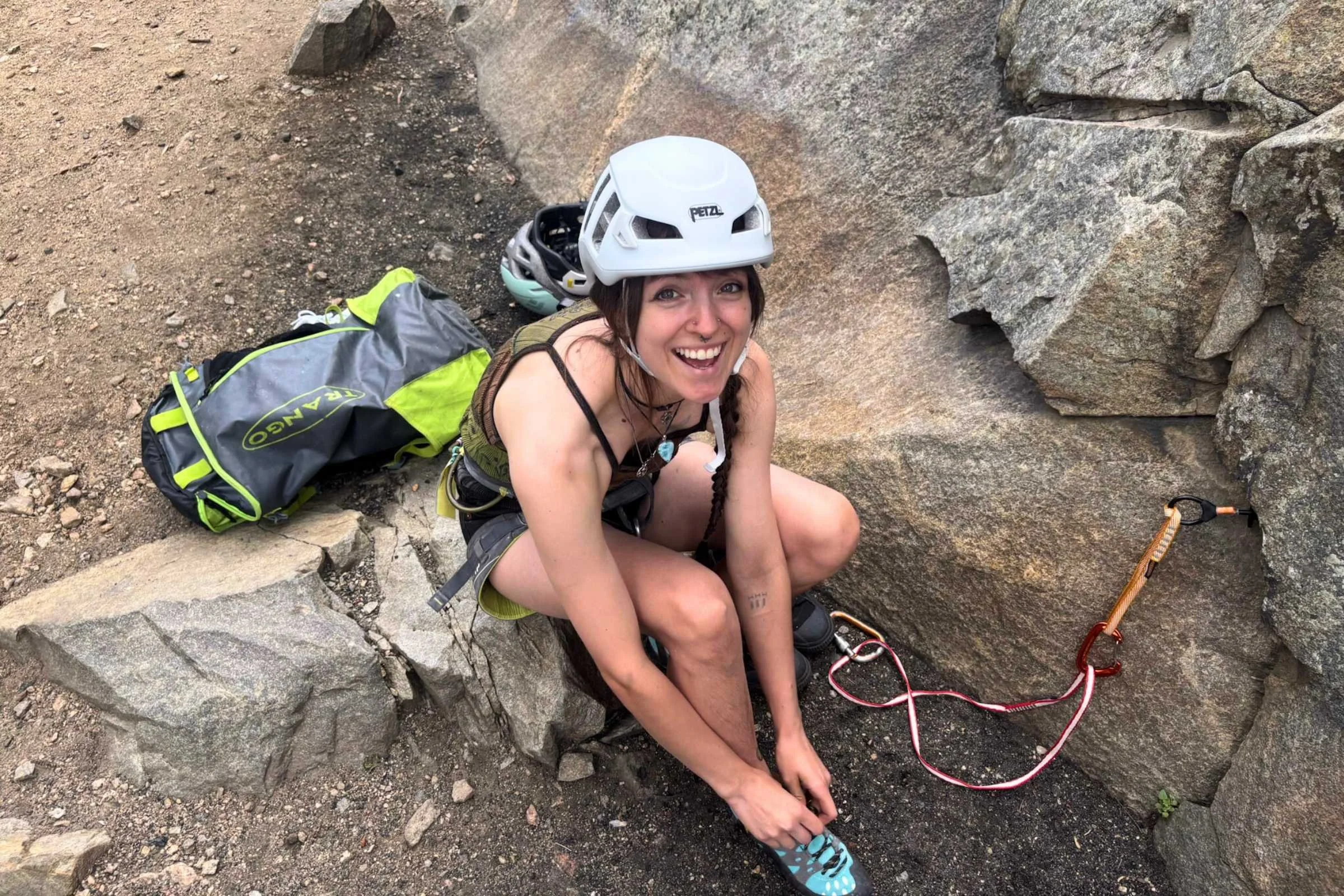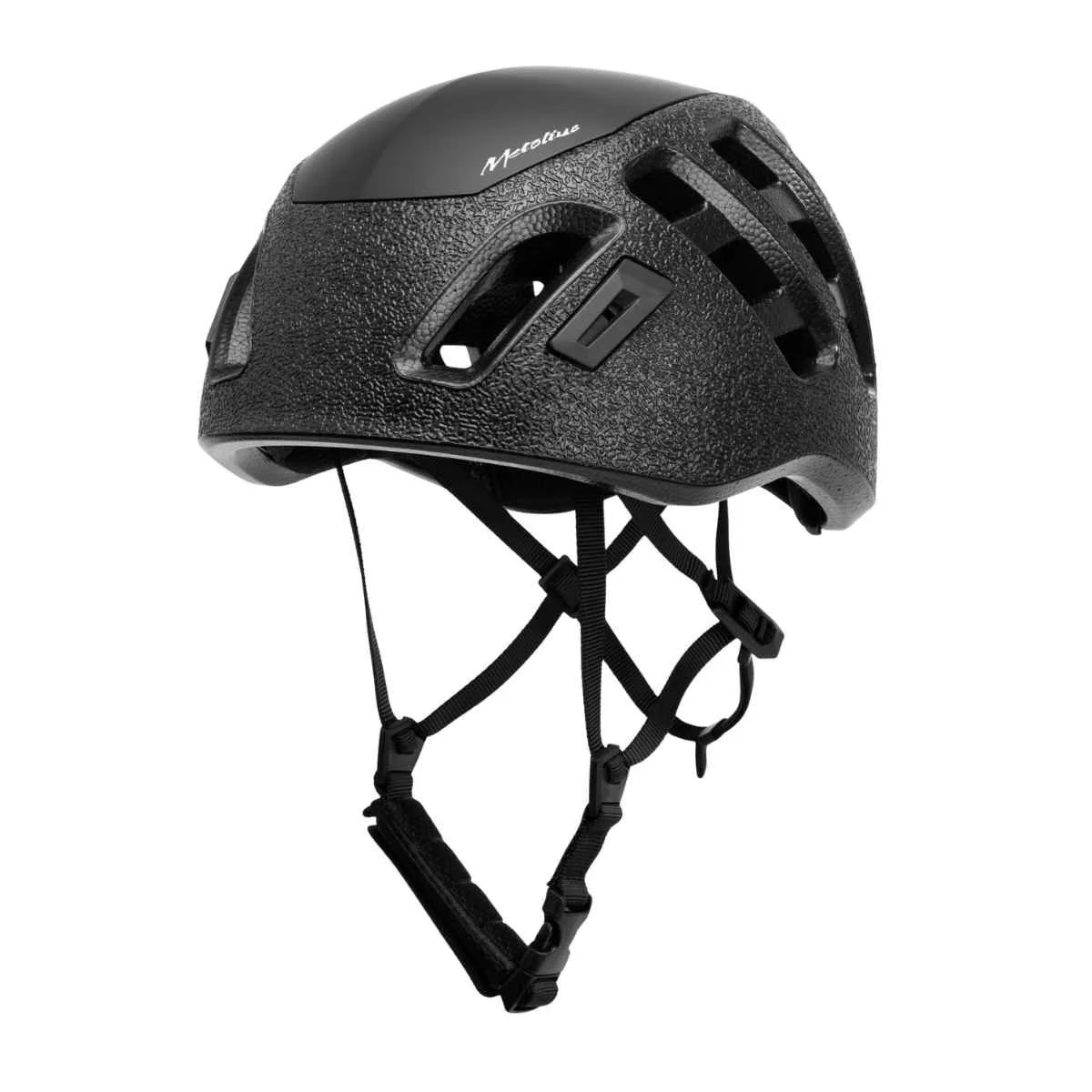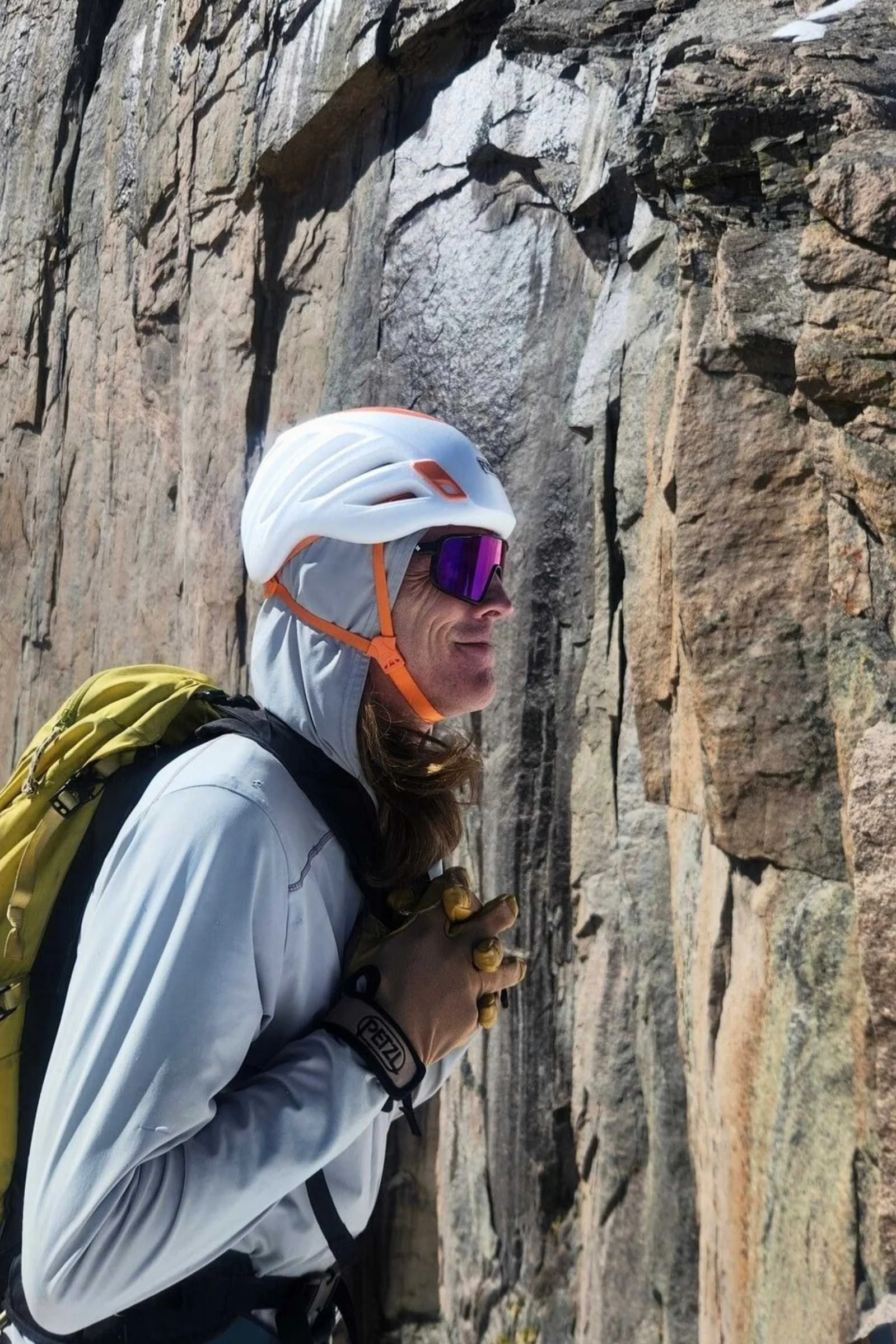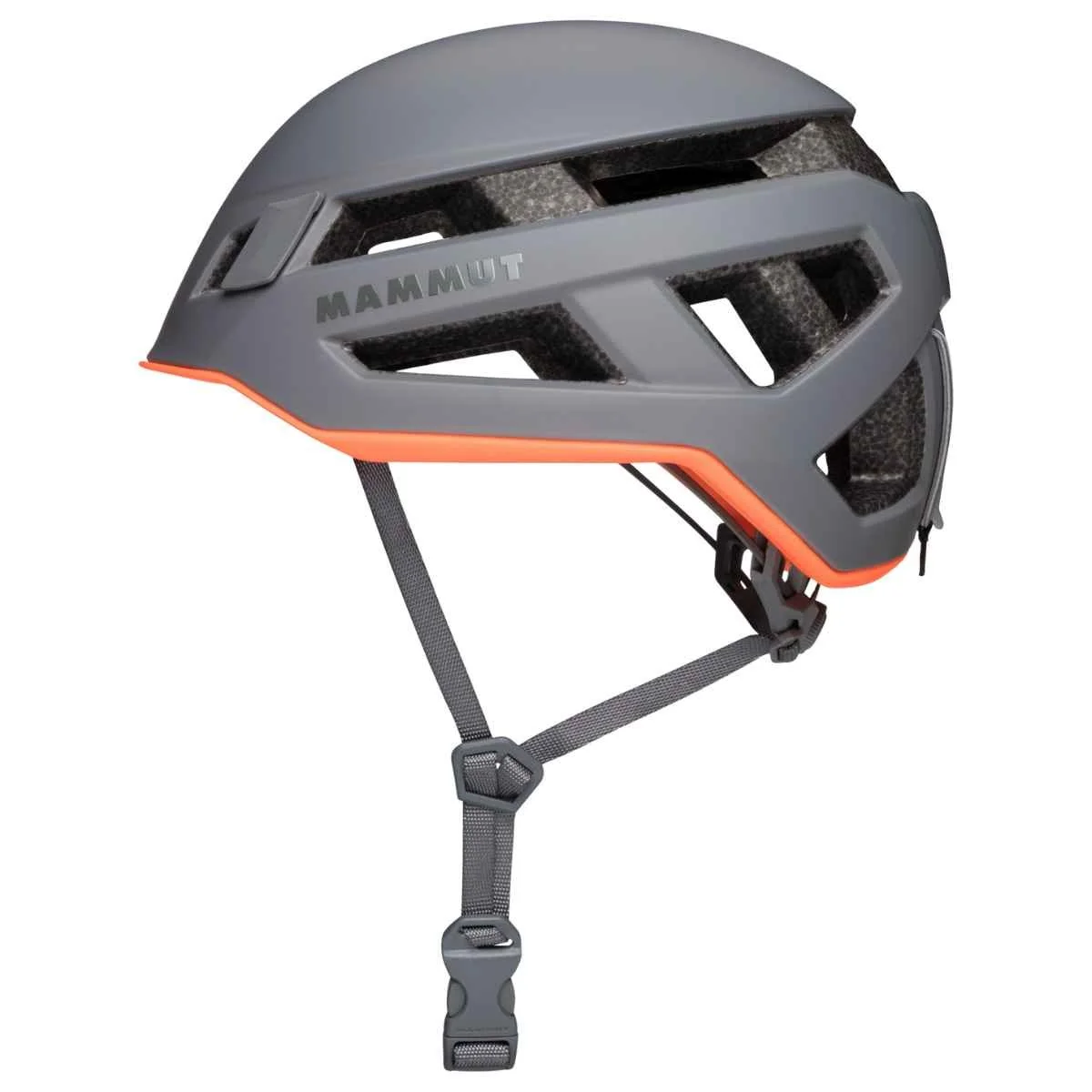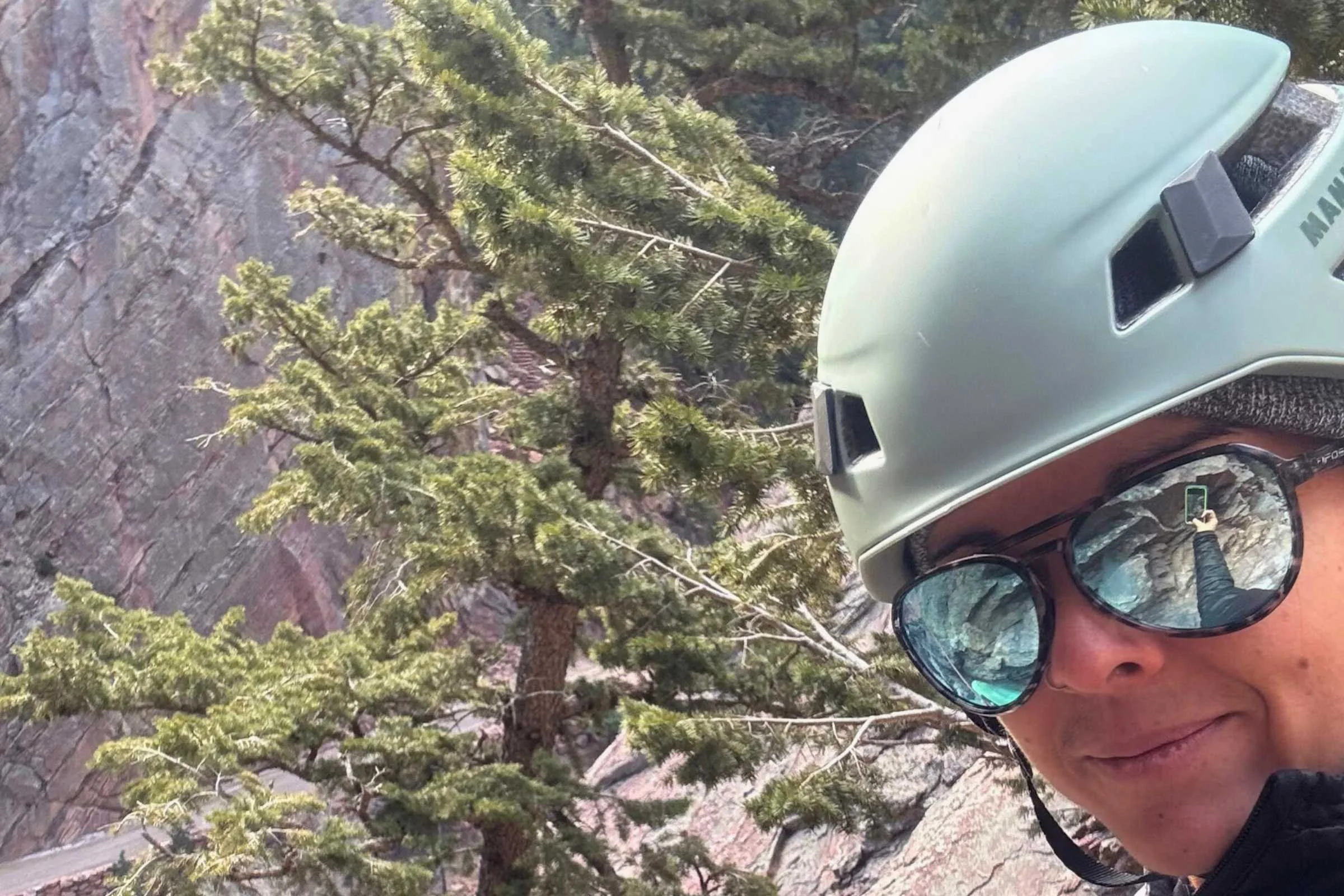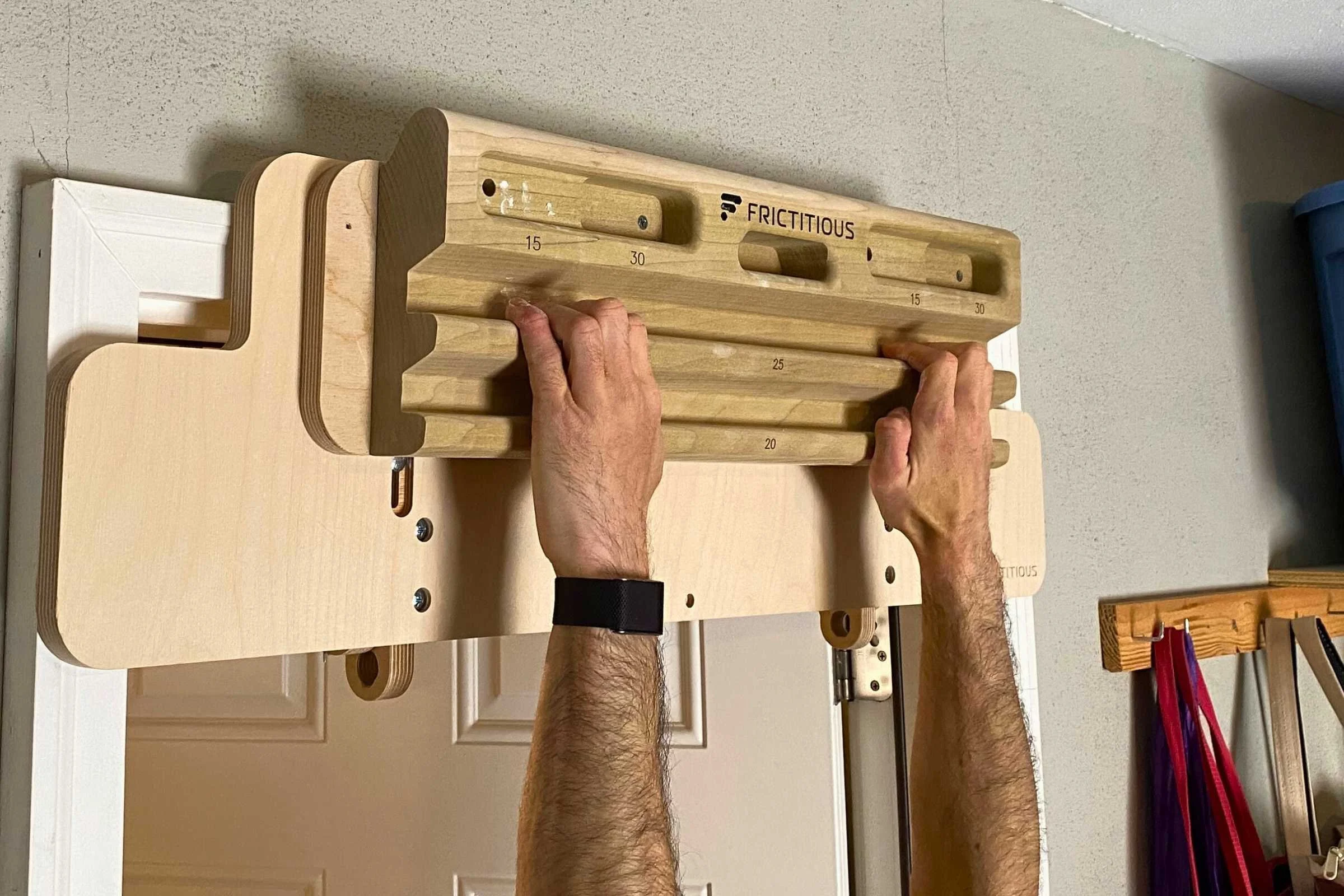Best Climbing Helmets of 2025
The best helmets for climbing based on protection, durability, comfort, features, and more
August 19th, 2025
Home > Gear Reviews > Climbing
One of the most important pieces of climbing gear is your helmet. It’s one of those items that you hope to never need, but when you do, it’s really important that it protects your noggin.
Early helmets attempted to do just that. But they were often heavy, ill-fitting, and not particularly good at offsetting impact. Fortunately, since the time of the Romans, helmets have come a long way.Today's climbing helmets use a few different materials and designs to create a barrier between your head and the outside world while allowing the helmet to take the brunt of the impact. And importantly, climbing helmets meet strict standards set by the UIAA (International Climbing and Mountaineering Federation)—this sets climbing helmets apart from any other type of helmet.
Over the past few years, we’ve tested some of the most popular climbing helmets in places like Yosemite, the Rocky Mountains, and North and South Carolina. Here’s what we determined are the 7 best climbing helmets based on comfort, adjustability, safety features, and more.
You can also find more guides to our favorite climbing gear in the climbing section of our website.
We create reader-supported, objective, independently-selected gear reviews. This story may contain affiliate links, which help fund our website. When you click on the links to purchase gear, we may get a commission, without costing you an extra cent. Thank you for supporting our work and mission of outdoor coverage for every body! Learn more.
Comparison table
| PRODUCT | TREELINE AWARD | WEIGHT | SIZES | CONSTRUCTION | SAFETY RATINGS | MSRP |
|---|---|---|---|---|---|---|
| Mammut Wall Rider MIPS | Best Overall Read why |
225-250 grams / 7.94-8.82 ounces | 52-57 cm, 56-61 cm | EPP Foam, Polycarbonate shell | EN 12492 | $150 |
| Metolius Hardtop | Best Affordable Read why |
250-270 grams / 8.8-9.5 ounces | 52-58 cm, 58-61 cm | EPP Foam, ABS Shell | EN 12492 | $65 |
| Black Diamond Capitan | Best Beginner Read why |
295-325 grams / 10.4-11.4 ounces | 53-59 cm, 58-63 cm | EPP Foam, EPS Foam Puck, ABS Shell | EN 12492 (mountaineering), UIAA | $70 |
| Petzl SIROCCO | Best Alpine/Best Lightweight Read why |
160-170 grams / 5.6-6 ounces | 48-58 cm, 53-61 cm | EPP Foam shell, PC Crown, EPS liner, Polyester webbing | EN-12492, UIAA standards | $160 |
| Mammut Crag Sender | Best Multi-Pitch Read why |
210-220 grams / 7.4-7.8 ounces | 52-57 cm, 56-61 cm | EPS foam, PC shell | CE EN 12492 | $100 |
| Black Diamond Vision | Best for Comfort Read why |
215-225 grams / 7.5-7.9 ounces | 53-59 cm, 58-63 cm | EPP Foam, EPS Foam Puck, ABS Shell | UIAA, EN 12492 | $110 |
| Petzl METEOR/ METEORA | Best for Versatility Read why |
225 grams / 7.9 ounces | 52-58 cm | PC Crown, EPS liner, Polyester webbing | CE EN 12492, CE Ski touring standard (PCSR-001), UIASS standards | $115 |
The Winners
Best Overall Climbing Helmet: Mammut Wall Rider MIPS Helmet
Weight: 225-250 grams / 7.94-8.82 ounces
Sizes: 52-57 cm, 56-61 cm
Construction: EPP Foam, Polycarbonate shell
Safety ratings: EN 12492
What we liked: Advanced safety features, comfortable fit, bill, all around protection
What we didn’t like: Price, size adjuster could be more intuitive
We chose the Mammut Wall Rider with MIPS technology as our top pick because it does what a climbing helmet should do: it protects your head from not only standard climbing obstacles but also the rotational force that’s commonly responsible for concussions. What’s more is that it does so at a relatively accessible price , and it manages to retain comfort—taking away any excuse a climber might devise to ditch their helmet. There’s no reason not to wear the Mammut Wall Rider.
Mammut Wall Rider MIPS Helmet
The Mammut Wall Rider was the first climbing helmet to adopt MIPS technology in 2009—just two years after the first MIPS helmet was released for equestrian use. While the technology has been around for almost 20 years, this helmet’s hefty price point creates a deterrent for some athletes, forcing them to shell out an extra $50 in an already expensive sport. In our opinion, it’s worth the strain on your pocketbook, because your head deserves protection.
In addition to its MIPS technology, the Mammut Wall Rider utilizes expanded polypropylene (EPP) as its foam base, and a partial hard shell to help protect climbers from both falling rock or ice and the impact of a fall. The internal padding components enhance comfort, which is ideal for all-day use.
And it even comes with bonus features, like two clips on the front of the helmet and a rubber loop on the back to keep your headlamp in place, and large ventilation pocks for improved air circulation. With features like these, you might assume that the helmet is heavy, but it weighs just 225–250 grams, making it a relatively lightweight helmet option.
Best Affordable Climbing Helmet: Metolius Hardtop Climbing Helmet
Weight: 250-270 grams / 8.8-9.5 ounces
Size: 52-58 cm, 58-61 cm
Construction: EPP Foam, ABS Shell
Safety ratings: EN 12492
What we liked: Accessible price, reasonable weight, durability, washable fit pads
What we didn’t like: Helmet style, no brim
Metolius is constantly challenging climbing gear prices, and the Metolius Hardtop Climbing Helmet is a great example of that trend. For the same cost as three pairs of wool socks, climbers can grab a high-quality helmet with an EPP and ABS construction with an ultralight webbing retention system that protects and cradles your head no matter if you’re at the local sport crag or on a big wall somewhere in the world.
Metolius Hardtop Climbing Helmet
Weighing 8.8 to 9.5 ounces, this helmet is one of the bulkier options on this list. But its weight adds to a burlier construction that can handle heavy use. While EPS alternatives to this helmet are a little bit lighter, they also likely won’t be able to handle living in the same backpack as your quickdraws or rack. So, this is a great pick if you’re hard on your gear and you want your helmet to be a bit burlier.
In addition to providing a durable, entry-level construction, this helmet comes with large ventilation holes, headlamp clips with an elastic strap in the back, and removable fit pads for cushioned comfort.
Best Beginner Climbing Helmet: Black Diamond Capitan Helmet
Weight: 295-325 grams / 10.4-11.4 ounces
Size: 53-59 cm, 58-63 cm
Construction: EPP Foam, EPS Foam Puck, ABS Shell
Safety ratings: EN 12492 (mountaineering), UIAA
What we liked: Added safety standards, available in a MIPS version, side and back protection
What we didn’t like: Heavier than competitive helmets
The standard Black Diamond Captain Helmet comes close to matching the price of our Best Affordable pick, the Metolius Hardtop Climbing Helmet, but it differs in a few ways. This helmet is a few ounces heavier, and it integrates both EPP and EPS foam into the design to create added durability while reducing the likelihood of experiencing a helmet fracture.
Black Diamond Capitan Helmet

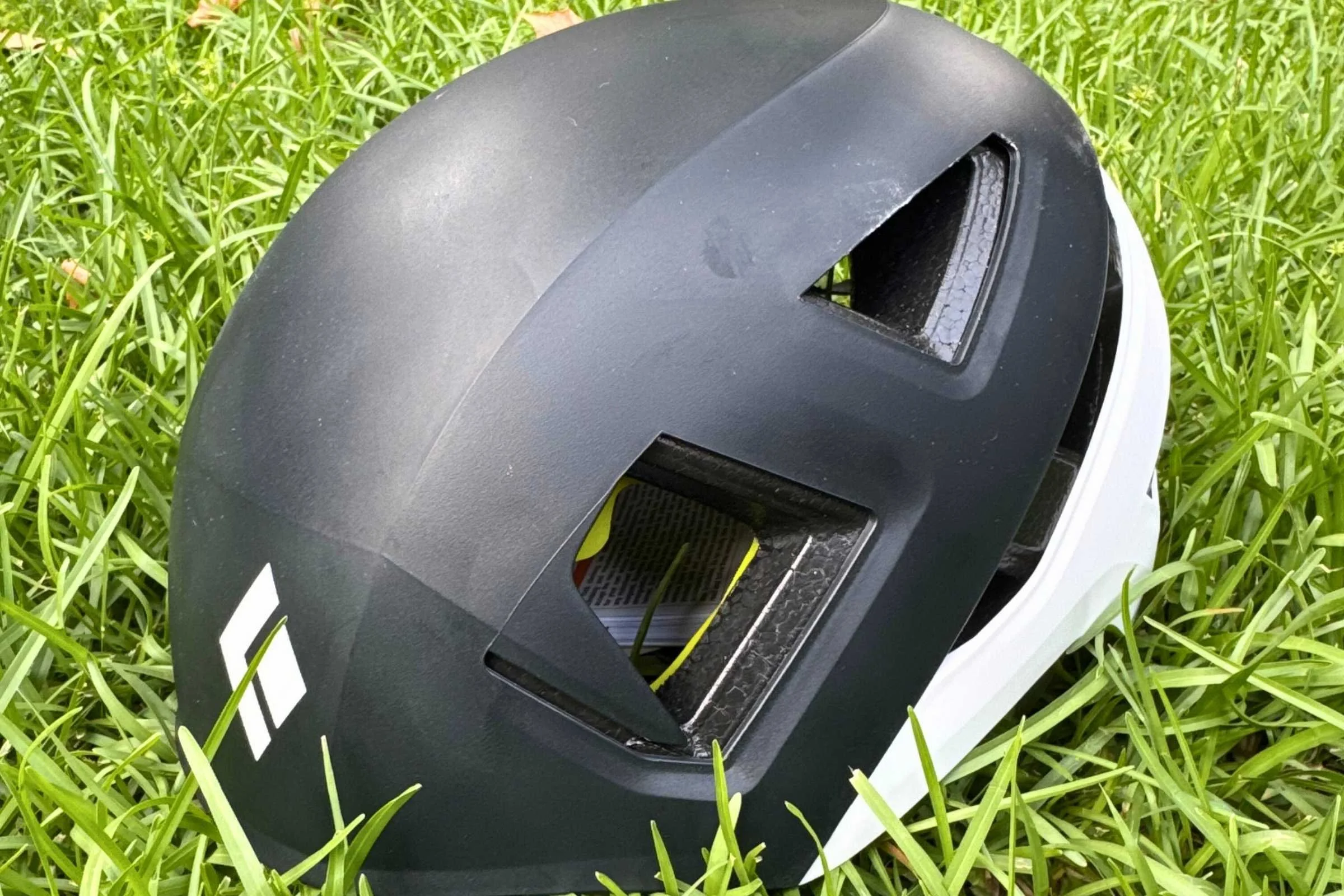

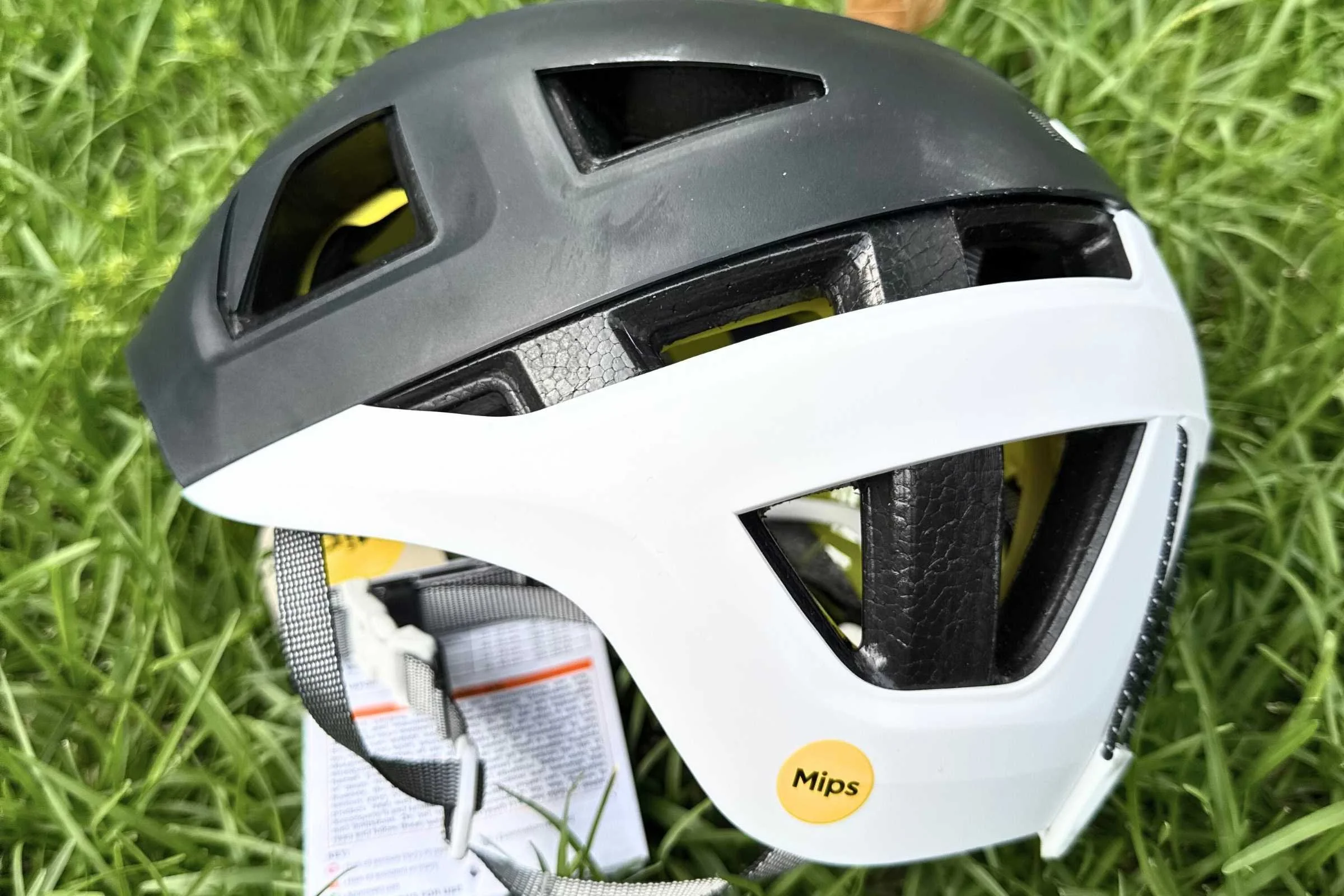
We tested the MIPS version of this helmet and found it to be comfortable and reliable in design, but noticeably heavier than the Mammut Wall Rider. But we love the helmet’s dual EN and UIAA safety certifications and extended coverage.
Our main caveat is that this helmet runs small, so it’s not the best option for climbers who require a spacious fit. What’s more is that it can be difficult to adjust this helmet while you’re wearing it since the plastic piece that keeps the webbing in place requires adjustments on both sides. But, overall, this is a great helmet for beginners due to its accessible price, hefty design, and added protection.
Best Alpine Climbing Helmet: Petzl Sirocco Helmet
Weight: 160-170 grams / 5.6-6 ounces
Size: 48-58 cm, 53-61 cm
Construction: EPP Foam shell, PC Crown, EPS liner, Polyester webbing
Safety ratings: EN-12492, UIAA standards
What we liked: Easily the lightest helmet on this list
What we didn’t like: Higher price point, no longer meets EN 18100 (2024 ski mountaineering requirements)
Described by Petzl as an “ultra-lightweight” helmet, this helmet really lives up to its intended design. Weighing 5.6 to 6 ounces depending on size, the Sirocco has the equivalent weight of a bar of soap or 12 playing cards. The Petzl Sirocco is easily the lightest helmet on this list by about 3 ounces. While some climbers might not give a hoot about a 3 ounce difference, alpinists and big wall adventurers probably do.
Petzl Sirocco Helmet
In order to create that lightweight design, Petzl combined EPP foam, PC, and EPS liner, and polyester webbing while adhering to both EN 124921 and UIAA standards. Made for alpinism and mountaineering, this helmet is a must-have for backcountry lovers. It provides all of the protection you could want without adding bulk to your pack. This helmet also has 24 vents to help your head shed heat amidst challenging adventures—another ideal quality for multi-day adventures.
Admittedly, this helmet has a less accessible price (it’s the most expensive helmet on our list, and it doesn’t come with MIPS technology). We also don’t love the magnetic clasp system on this helmet since the magnet can attract sediment, making it difficult to close. While this helmet did also meet ski mountaineering certification requirements at one point in time, they no longer adhere to the 2024 standards (the 2025 standards come out in September).
Still, it’s tough to beat a helmet that boasts of this much coverage while weighing practically nothing. This is a must-have helmet for serious adventurers and ounce counters that want protection without bulk.
Best Multi-Pitch Climbing Helmet: Mammut Crag Sender Helmet
Weight: 210-220 grams / 7.4-7.8 ounces
Size: 52-57 cm, 56-61 cm
Construction: EPS foam, PC shell
Safety ratings: CE EN 12492
What we liked: Added front, back, and side protection, cushioning, headlamp attachment, aerial wheel adjustment
What we didn’t like: Runs large
The Mammut Crag Sender was our go-to helmet while multi-pitch climbing in Yosemite, and it worked like a dream. This helmet weighs 7.4-7.8 ounces, making it barely noticeable while you’re on the wall all day. Its EPS foam and PC shell construction give it great coverage and protection benefits without the added weight of EPP alternatives. It also comes with large ventilation openings and integrated air channeling to keep you cool on full-day adventures.
Mammut Crag Sender Helmet
Multi-pitch climbers typically gravitate towards helmets that can be adjusted with one hand, and the Mammut Crag Sender accomplishes this with its wheel adjustment system. Instead of forcing you to use two hands to shift the fit of the attachment system, you can easily shift the sizing back and forth with just one hand. We also found that this helmet’s fit makes it a good choice for people with small heads.
Best Comfortable Climbing Helmet: Black Diamond Vision Helmet
Weight: 215-225 grams / 7.5-7.9 ounces
Size: 53-59 cm, 58-63 cm
Construction: EPP Foam, EPS Foam Puck, ABS Shell
Safety ratings: UIAA, EN 12492
What we liked: Most durable helmet in Black Diamond collection, low-profile suspension, removable padding, good for big heads
What we didn’t like: Slightly generous fit
The Black Diamond Vision is one of the most comfortable helmets we tested due to its extra padding and design. While some helmets come with tight spots, the Vision manages to provide full coverage without overdoing it. We never felt like we needed to readjust the helmet once we customized the suspension system, which felt like a testament to its comfortable design.
Black Diamond Vision Helmet


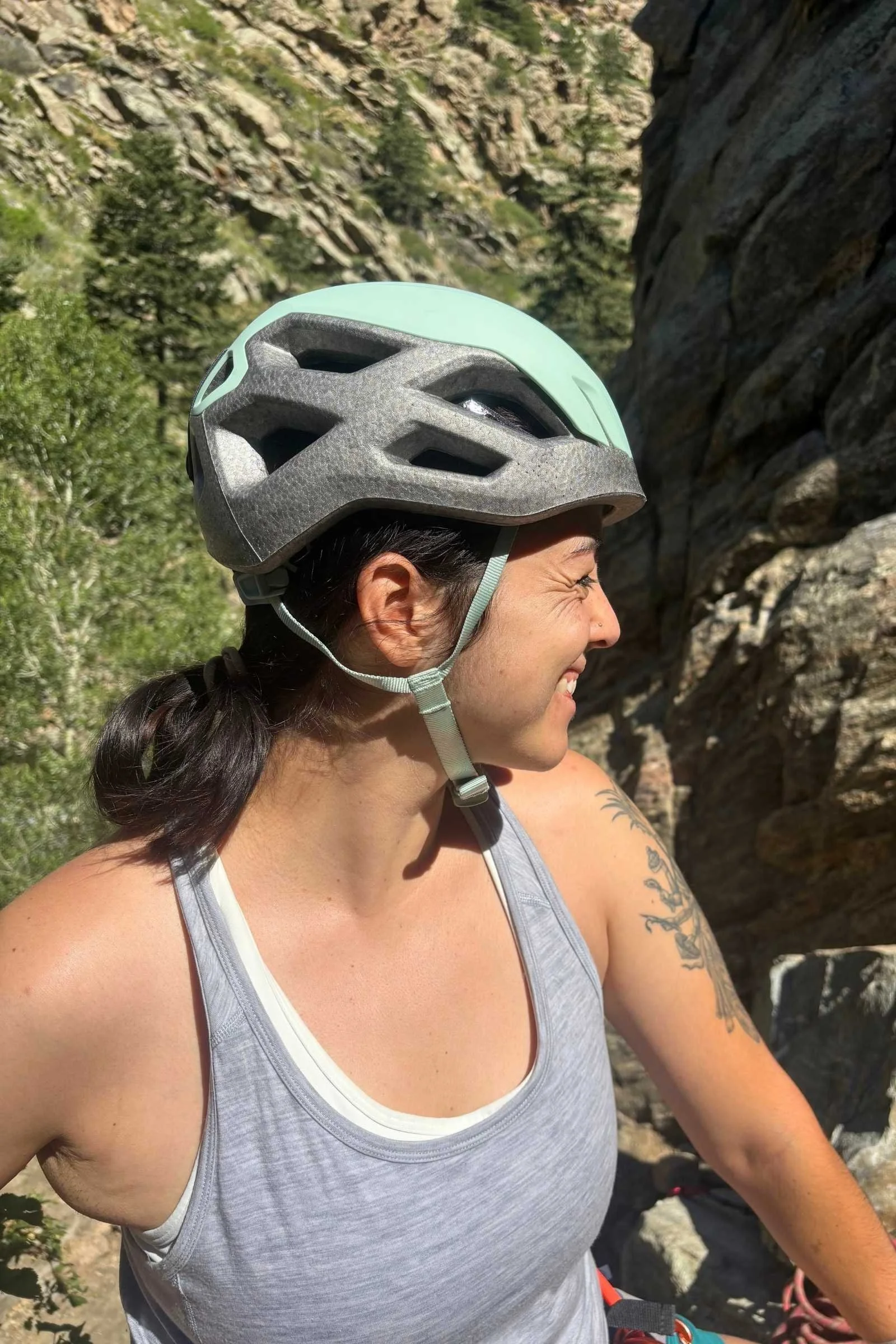
This helmet comes with an EPP foam construction, and EPS foam puck, and an ABS shell to provide protection without the bulk. It’s also known for being the most durable helmet in the Black Diamond collection, which is ideal for those of us who are hard on our gear.
This helmet also comes with integrated headlamp clips, and six color options. The overall design and adjustable features of this helmet are intuitive and easy to use.
Best Versatile Climbing Helmet: Petzl Meteora Helmet
Weight: 225 grams / 7.9 ounces
Size: 52-58 cm
Construction: PC Crown, EPS liner, Polyester webbing
Safety ratings: CE EN 12492, CE Ski touring standard (PCSR-001), UIASS standards
What we liked: Protection versatility, vents, designed for ponytails, slider adjustment
What we didn’t like: Limited sizing
We tested both the Petzl Meteor and the Petzl Meteora, a women’s-specific climbing version. Both models exceeded our expectations in a variety of ways including their simple designs, venting system, and overall versatility. The main difference between the woman and men’s version of the helmet is ponytail compatibility, which can be a nice addition for those of us who rock long hair. But, truthfully, we loved these helmets for an entirely different reason: their multi-sport versatility.
Petzl Meteora Helmet
These helmets not only come with the standard UIASS and EN 12492 certifications of climbing helmets, but they’re also rated for ski touring (PCSR-001), which makes them a great option for 4-season athletes that don’t want to carry multiple helmets. These helmets provide protection for a variety of impact types, yet they manage to retain a lightweight design. The women’s version of this helmet comes in one size, and weighs 7.9 ounces, which is a middle-of-the-road weight for a quality climbing helmet. But this helmet is anything but a middle-of-the-road helmet.
In addition to its excessive safety certifications, this helmet is made with a polycarbonate crown, an EPS liner, and polyester webbing. The woman’s version contains 21 vents for added breathability, as well as an OMEGA headband to keep your ponytail off of your neck.
The Petzl Meteor was the first ever helmet certified for ski touring, and it remains one of the best options today. Features like its breathability and goggle attachment points make it reliable and consistent no matter the mountain conditions. Our only complaint is that the women’s version of this helmet only comes in one size.
Other Climbing Helmets We Tested
We will update this section as we test more climbing helmets.
What to Look for in a Climbing Helmet
A quality helmet should adhere to the industry’s top safety standards while providing the climber with a proper fit, adjustable components, and comfort for multi-pitch routes. Here’s what else you should know about the qualities a climbing helmet should have.
Climbing helmets with lots of ventilation panels maintain airflow even on hot and humid days.
Fit
Climbing helmets should fit snugly without sliding around on the crux move. The helmet should evenly press all around your head without feeling wobbly, while the chin strap should be snug but allow you to slip a finger between your face and the webbing/strap.
Sizing
Most climbing helmets come in two sizes: small/medium and medium/large. Head circumference ranges are usually somewhere around 21–23 inches and 23–25 inches. Some brands are beginning to make women’s-specific helmets. The main differences between unisex and women’s helmets surround helmet sizing and ponytail compatibility. Women’s-specific helmets tend to run smaller and give you somewhere to put your ponytail comfortably while wearing a helmet, which is great if your hair is long enough to get caught in your belay device. But helmets that come in a small version accommodate most women.
Adjustability
Climbing helmets come with a variety of different adjustment systems including plastic closure systems on the back, and webbing-based systems. But most helmets allow you to shift the tightness both around your head and your chin. Adjustability is an ideal helmet feature since it’ll allow the climber to add a hat or a beanie under their helmet if need be, while maintaining a snug fit.
Comfort
While safety is the priority when it comes to choosing a climbing helmet, comfort should not be overlooked. You should be able to wear it all day long without feeling jabbing, pinching, hair catching, or excess sweat.
Weight
Climbing helmets range in weight from about 5 to 12 ounces. Generally, the heftier the helmet, the more durable. Those who are more inclined to tackle an extensive approach to a crag might be more inclined to shave a few ounces off of the weight of their helmet while crag goers might opt for a heftier option.
Helmet Ventilation
Climbers often spend long days in warm and exposed environments, which means without proper ventilation, their head is prone to getting swampy. Helmets like the Black Diamond Vapor take this into consideration by providing 18 ventilation panels to maintain airflow even in humid conditions.
Understanding Helmet Safety Ratings
Climbing helmets are usually certified under the EN 12492 standard in Europe and the UIAA 106 standard. These standards measure impact absorption, penetration resistance, and the strength of the retention system to determine how much protection a helmet will yield. The UIAA certification is more stringent than the EN standard.
Climbing Helmet Types
Climbing helmets typically come in three types: hard shell, foam shell, and hybrid options. A hard shell climbing helmet utilizes a thick piece of ABS plastic. Foam shell helmets rely on a piece of foam that can crush/absorb an impact. And hybrids use elements of both.
Parts of the Helmet
The three main elements of a climbing helmet include the outer shell, the inner liner, and the retention system. The outer shell helps to protect the user from debris and small impacts. The inner liner takes the brunt of large impacts. And the retention system is the network of elements that keeps your head in place—mainly the chin strap and adjustment pieces.
Shock Absorption and Foam Types
Most climbing helmets use either expanded polystyrene (EPS) and expanded polypropylene (EPP) to absorb impact. EPS is a time-tested material choice that’s hard to the touch and generally fractures in a fall. The benefit of this material is its lightweight design. But due to its fragile disposition, it’s more likely to be crushed in your climbing pack or fracture if handled roughly.
EPP, on the other hand, is a newer material in the realm of climbing helmets. It does not fracture like EPS. Helmets like the Black Diamond Vision, Captain, and Vapor, and the Petzl Sirocco utilize this material. This material both absorbs impacts and functions well against falling objects.
Shell Types
In the same way that most helmets come with an EPP or EPS foam construction, they also usually deploy the usage of ABS or polycarbonate (PC) materials as their shell. ABS is known for its affordability and ability to handle repeated impacts. But they tend to be a touch heavier than polycarbonate. Polycarbonate shells allow climbers to drop their pack weight by a few ounces. It’s also more flexible than ABS and offers some UV protection.
Coverage
Climbing helmets come with varying levels of coverage, but every helmet should cover the top, sides, and back of the head at minimum. It should also be able to fit comfortably around your head and hair, and adjust smaller or larger if needed.
Multi-directional Impact Protection System (MIPS)
MIPS technology was created to improve protection in helmets to reduce the impact of rotational force. While traditional helmets measure linear impacts, MIPS addresses movements that involve rotation, which can reduce the risk of concussions. MIPS was born in 2001 when the company, MIPS AB, was established. The company introduced the new technology to an equestrian helmet in 2007. Since then, many ski and bike helmets have adopted the technology. And we’re beginning to see its inclusion in climbing helmets.
Expiration Dates
Like most climbing gear, climbing helmets generally have a lifespan of 10 years from the date of manufacture. However, helmets are generally only designed to withstand a single, substantial impact. This means that if a climber takes a fall and smashes their helmet, the internal foam has likely been damaged and is no longer safe to use. Climbing gear usually comes with a tag that outlines the date of manufacturing to allow the user to determine when it is no longer safe to use.
Care and Maintenance Tips for Climbing Helmets
Caring for your climbing helmet goes a long way toward maintaining its integrity and reliability for years at a time.
Regular Inspections
One of the best ways to keep tabs on your helmet is by inspecting it regularly with the rest of your gear. Look for damage to essential components like the shell, foam, and attachment system. If it’s showing any signs of cracks, dents, signs of impact, and discoloration (since discoloration could hint at UV damage), it’s probably time to retire your helmet.
Keeping it Clean
Every climbing helmet can benefit from a periodic scrub. First, detach the removable padding from the helmet. Then, use a mild soap, warm water, and a cloth to wash the helmet. Once you’ve gently cleaned the helmet, make sure to let it fully air dry all the components of the helmet before reassembling the pieces.
Our testing process
Multi-year climbing helmet testing in Yosemite, the Rocky Mountains, and North & South Carolina
Testing locations
- Yosemite climbs, including multi-pitch routes
- Rocky Mountains crags and alpine terrain
- North Carolina climbing areas
- South Carolina climbing areas
- Single- and multi-pitch routes over several seasons
What we test
- Comfort and interior padding for all-day wear
- Fit, sizing, and adjustability of suspension systems
- Protection and coverage from foam and hard-shell construction
- Ventilation and heat management on hot approaches and climbs
- Weight on the head for long multi-pitch and alpine days
- Features like headlamp clips and usability on real climbs
About the Author / Why You Should Trust Us
Mary Beth Skylis is a freelance writer who specializes in adventure content and travel. She’s been climbing across the globe for more than a decade, and is a total sucker for limestone, granite and long multi-pitch climbs. She currently works as a columnist for Backpacker Magazine. She also has by-lines in Climbing, REI, Alaska Magazine, Women’s Health, Outside Magazines, Trail Runner, SELF, 5280, and Yellow Scene. When she isn’t writing, she can typically be found frolicking in the Rocky Mountains. Follow her on Instagram: @h1kertrash.

